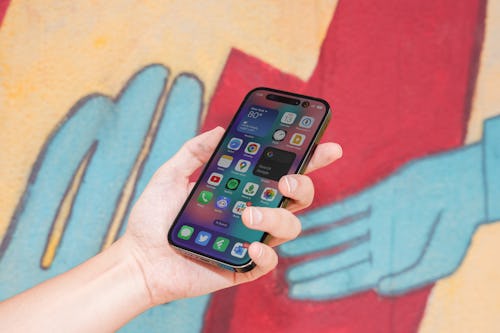
What does the "Pro" in the iPhone 14 Pro and 14 Pro Max really represent? Finally, something meaningful, actually.
In the past, an iPhone Pro has meant a few things: a more premium stainless steel frame, an extra telephoto lens in the rear camera, "pro" shooting modes like ProRAW and ProRES, a display with ProMotion refresh rate, and larger storage options.
The differences between a “pro” iPhone and a regular one were minor enough that most people didn't need to get Apple's top-of-the-line smartphone. This year, though, Apple has really put the "pro" in the iPhone 14 Pros. Even if the regular iPhone 14 / 14 Plus suffice, the iPhone 14 Pros are really tempting.
The new 48-megapixel main lens in the triple-lens camera is more pro than the 12-megapixel shooter in the iPhone 14s; there's also an "Action mode" that captures seemingly impossibly shake-free videos. The display is more pro, too, with a very clever "Dynamic Island" that replaces the notch and an always-on display mode that pairs wonderfully with iOS 16's new customizable lock screen. And for the first time, the pro iPhones have a more powerful chip (A16 Bionic) than the non-pro models (A15 Bionic).
With no price hikes (in the U.S. at least) — the iPhone 14 Pro and 14 Pro Max start at the same $999 and $1,099 as the iPhone 13 Pros did — Apple's premium iPhones are a dang good deal, and even more so if you trade in an old iPhone to get a discount.
Input may receive a portion of sales if you purchase a product through a link in this article. We only include products that have been independently selected by Input's editorial team.
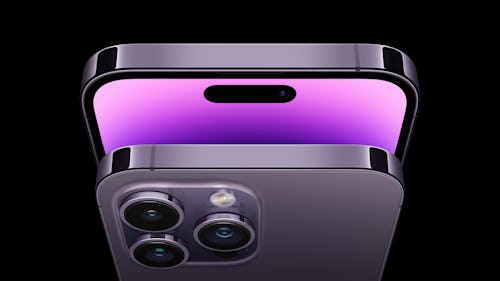
Design
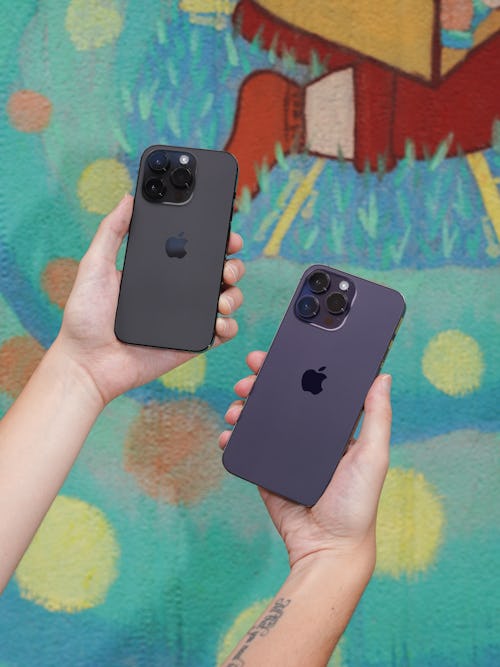
Since the beginning of the "iPhone brick era" (as I like to call it), the iPhone Pro has steadily increased in thickness and weight. Don't get me wrong, the iPhone 14 Pros are sleek slabs, but they're still bricks. As much as I love that Apple is prioritizing function over form, I think it's time the iPhone goes on a diet. I’m not saying Apple should make the iPhone 15 as bendable as the iPhone 6, but slimming down the profile would make my hand hurt less.
iPhone Pro:
- iPhone 12 Pro: 7.4mm / 189 grams
- iPhone 13 Pro: 7.65mm / 204 grams
- iPhone 14 Pro: 7.85mm / 206 grams
iPhone Pro Max:
- iPhone 12 Pro Max: 7.4mm / 228 grams
- iPhone 13 Pro Max: 7.65mm / 240 grams
- iPhone 14 Pro Max: 7.85mm / 240 grams
Coming from the iPhone 12 Pro, I definitely feel the iPhone 14 Pro's extra heft day to day; the huge triple-lens camera makes it more top-heavy. The iPhone 14 Pro Max is the same weight as the iPhone 13 Pro Max, but still a good deal heavier than the iPhone 12 Pro Max. All of this is to say the iPhone 14 Pro / Pro Max are not the lightweight iPhones of Apple's past, especially with a case on.
My iPhone 14 Pro review unit is Space Black. I love it. The glass back and the stainless steel frame are noticeably darker than the gray Graphite iPhone 13 Pro; like a mix between the black and Jet Black iPhone 7. My iPhone 14 Pro Max review unit is Deep Purple; it's a dark purple that sometimes looks gray or black. Both look sleek in person; both are still fingerprint magnets. You can also get them in silver and gold.
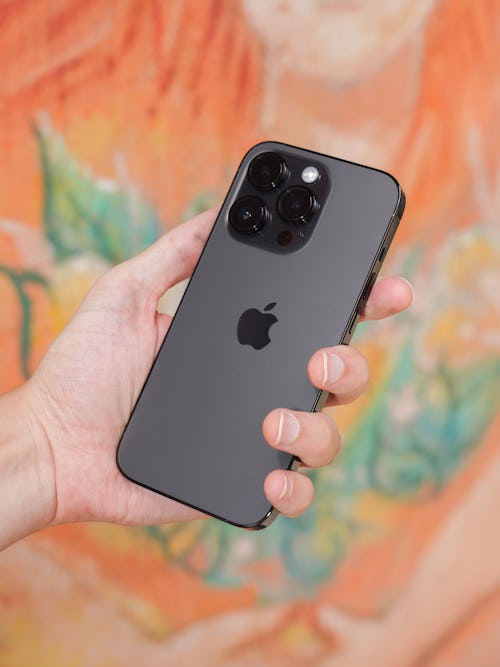
eSIM future —
In the U.S., there's one feature change that has been controversial since the iPhone 14 Pros were announced: the lack of a physical nano SIM card. Apple has removed the tray, opting for eSIM instead. The change has caused quite a stir with people who frequently switch between phones (like travel junkies and people like me who review tons of phones for a living). Here's the deal: for most people, converting their physical SIM to an eSIM will be an initial hassle and then they'll forget all about it. By the time they replace their iPhone 14 Pro, more carriers and phones (iPhone or not) will have adopted eSIM.
Like it or not, eSIMs are the future. There's also an upside to eSIM: you can store eight of them in your iPhone 14 Pro and have two of them active at the same time. You'd need a little wallet or case to hold your physical SIMs, and then pray you don't lose any of them. Tech nerd me does wish Apple would give consumers the option to buy an iPhone 14 Pro with a SIM card slot. Why not make it an option for the people who want it? The models are being sold outside of the U.S. Just ship some over.
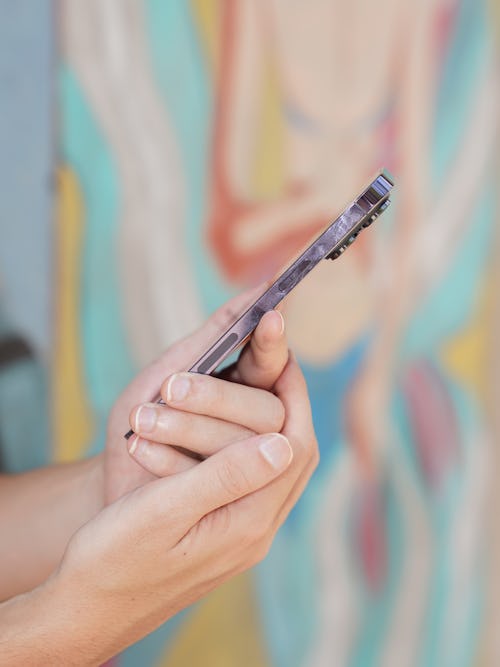
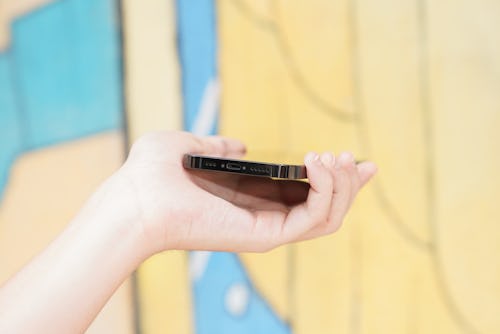
The Lightning port also lives another year. The clock is ticking for Apple to switch the iPhone to USB-C, likely next year. Apple is also sticking with the same wired charging speeds: 50 percent charge in 30 minutes with a 20W (or higher) adapter, which isn’t included. At this point, I’m all in on MagSafe wireless charging, but I know I’m not the only one who wants to see faster wired charging speeds in the iPhone.
Display
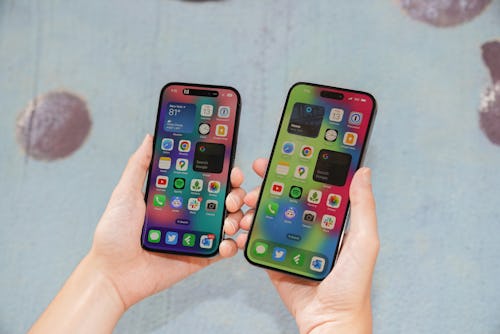
As with the iPhone 12 Pros and 13 Pros, the iPhone 14 Pros are available in two display sizes with fluid 120Hz ProMotion refresh rates: 6.1 inches for the 14 Pro and 6.7 inches for the 14 Pro Max. Both models also come with Apple's shatter-resistant "Ceramic Shield" protection. (The thoroughly scratched and dropped, but not shattered, display on my launch day iPhone 12 Pro is proof Ceramic Shield really works.) Screen size is only one part of the story, though.
iPhone Pro:
- iPhone 12 Pro: 2,532 x 1,170 (460 ppi)
- iPhone 13 Pro: 2,532 x 1,170 (460 ppi)
- iPhone 14 Pro: 2,556 x 1,179 (460 ppi)
iPhone Pro Max:
- iPhone 12 Pro Max: 2,778 x 1,284 (460 ppi)
- iPhone 13 Pro Max: 2,778 x 1,284 (460 ppi)
- iPhone 14 Pro Max: 2,796 x 1,290 (460 ppi)
Dynamic Island
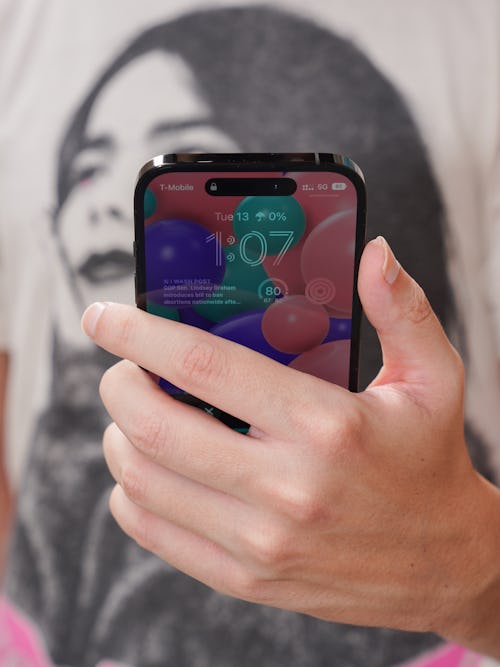
The most significant display upgrade is the Dynamic Island, which replaces the notch. This pill-shaped cutout is actually hardware and software working together to shapeshift. Inside of the Dynamic Island is the TrueDepth camera hardware; software merges these two cutouts into a singular pill, expanding and shrinking with activities, alerts, and notifications. The Dynamic Island is really friggin' cool and makes the iPhone 14 Pros feel alive. Audio apps like Apple Music and Spotify use the Dynamic Island to display album art and a waveform; phone calls show duration and a waveform; connected AirPods briefly appear in it and Face ID now pops out from the black bar instead of filling the center of the screen. And sometimes the Dynamic Island can split into two, like when you have a timer and music playing.
The Dynamic Island isn't just a shapeshifting menu bar, it also serves as a way to access shortcuts or return to an app, giving iOS another layer of multitasking previously not possible. A single tap on the Dynamic Island brings you to the app running, and a long press can open up more options like playback controls.
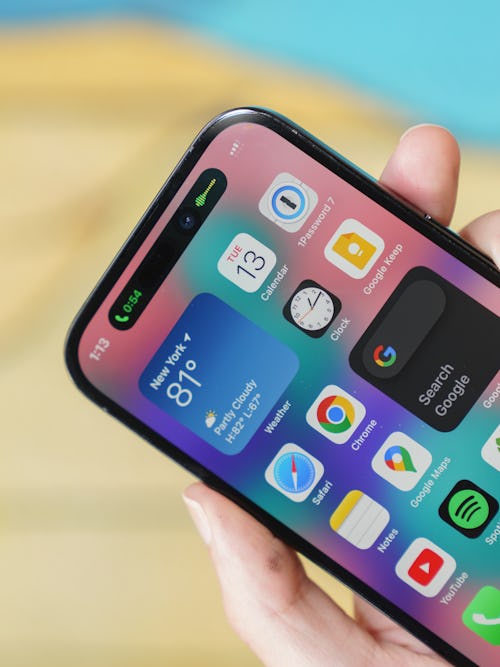
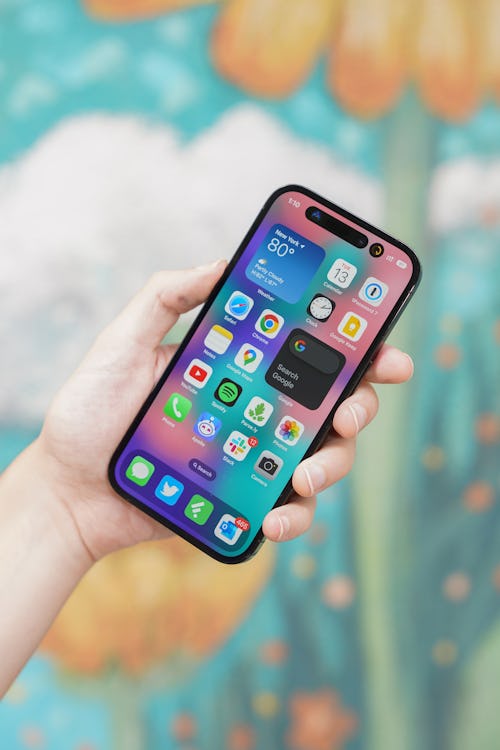
At launch, all apps that support the NowPlaying and CallKit APIs will automatically work with the Dynamic Island, no update required. When Live Activities rolls out via an iOS 16 update later this year, the Dynamic Island will be able to display at-a-glance info for stuff like food deliveries, sports scores, ride sharing, and fitness workouts. And this could just be the start. Apple could roll out new APIs in the future that gives the Dynamic Island more functionality.
The Dynamic Island is really friggin' cool and makes the iPhone 14 Pros feel alive.
The Dynamic Island isn't without any strangeness, though. For example, when it's too wide, vital icons like the Wi-Fi are pushed off into Control Center. Other times, the tiny yellow dot indicator to show that the microphone is active is weirdly pushed to the very edge of the right corner when an app is running in the background; however, when an app is open, the dot-sized indicators sit between the IR sensor and the front-facing camera.
Apple loves to overuse "magical" whenever it describes new features or products. In the case of the Dynamic Island, it's deserved. Even after a week of testing apps that support the Dynamic Island, the morphing pill continues to delight on a daily basis.
Always-on Display
Can we get a finally? While Android phones have had always-on displays (AOD) for years, Apple is just now adding an AOD to the iPhone 14 Pros as an exclusive feature. Could Apple just update older iPhones with an AOD? In theory, yes. Apple could, but its implementation of an AOD makes use of the iPhone 14 Pro's adaptive refresh rate that drops down to 1Hz for extremely low impact on battery life. In comparison, the iPhone 13 Pros refresh rate can only go down to 10Hz, which isn't energy efficient enough for Apple's AOD.
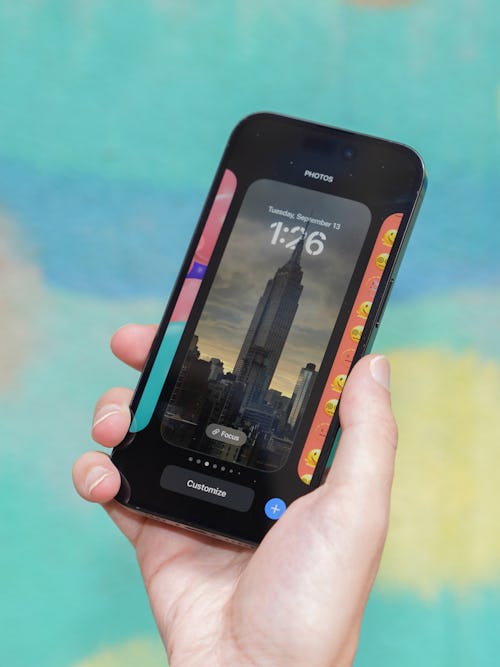
In typical Apple fashion, late as the iPhone is to the AOD game, it is better in my opinion. Unlike on Android phones where the AOD is black and only certain features like the time and notifications illuminate, the iPhone 14 Pros' AOD dims the lock screen wallpaper, leaving the time, calendar, and lock screen widgets visible. It's similar to how the Apple Watch's always-on clock works. I like being able to see my wallpaper, albeit dimmed out. I've seen no meaningful hit to battery life with the AOD. Unfortunately, there's no way to have an AOD that does not show the wallpaper in a dim state; the only workaround is using solid black wallpaper for the lock screen. The black, uh, dims to black.
One more thing to know about the always-on display: it does turn off in a few situations such as when the screen is face down, the device is in your pocket, and when you've walked away from it for a period of time. The AOD also turns off if your iPhone has a sleep focus turned on.
Increased Brightness
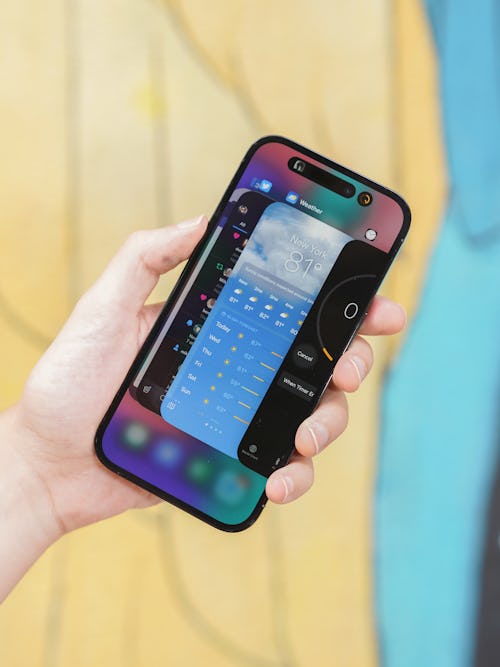
I don't think I have ever wished for my iPhone 12 Pro's Super Retina XDR display to be brighter; its 800 nits of max typical brightness and 1,200 nits of peak HDR brightness are blinding. On the iPhone 14 Pros, Apple has increased the brightness more for peak HDR and outdoors, and it's very, very bright.
- iPhone 12 Pro: 800 nits max / 1,200 nits peak HDR
- iPhone 13 Pro: 1,000 nits max / 1,200 nits peak HDR
- iPhone 14 Pro: 1,000 nits max / 1,600 nits peak HDR / 2,000 nits peak (outdoor)
I can't say anyone really needs the 1,600 nits of peak brightness for HDR content, but the 2,000 nits for outdoors is game-changing. The displays in the iPhone 14 Pros are much clearer in direct sunlight compared to my iPhone 12 Pro; I have not had to run into the shade to see Very Important Tweets.
Performance
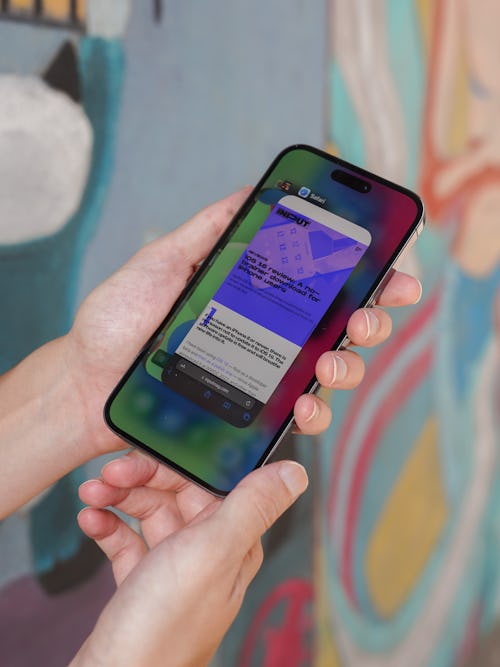
Apple did something really interesting this year. Instead of putting the newest, most powerful A-series chip in both the regular iPhone 14s and the iPhone 14 Pros, Apple only gave the pro models the new A16 Bionic chip. The iPhone 14s use the 5-core GPU variant of the A15 Bionic chip from the iPhone 13 Pros (the iPhone 13s had a 4-core GPU).
Here are some Geekbench 5 scores comparing how far the iPhone 14 Pros to the 13 Pros, 12 Pros, and Samsung's Galaxy S22 Ultra.
A16 Bionic vs. A15 Bionic vs. A14 Bionic — CPU test
- iPhone 12 Pro: (A14 Bionic): 1,586 / 3,937
- iPhone 13 Pro: (A15 Bionic): 1,725 / 4,722
- iPhone 14 Pro: (A16 Bionic): 1,875 / 5,495
- Galaxy S22 Ultra: (Snapdragon 8 Gen 1): 914 / 3,039
To nobody’s surprise, CPU performance is up year over year. That's good! Here's the breakdown: For single-core CPU tasks, the iPhone 14 Pro is 9 percent faster than the iPhone 13 Pro and 18 percent faster than the iPhone 12 Pro. And for multi-core CPU tasks, the iPhone 14 Pro is 16 percent faster than the iPhone 13 Pro and 39 percent faster than the iPhone 12 Pro. I tossed in the Samsung Galaxy S22 Ultra, powered by the Snapdragon 8 Gen 1, for comparison and the iPhone 14 Pros just annihilate it: 105 percent faster on single-core and 80 percent faster on multi-core.
A16 Bionic vs. A15 Bionic vs. A14 Bionic — GPU test
- iPhone 12 Pro (A14 Bionic): 9,499
- iPhone 13 Pro: (A15 Bionic): 14,419
- iPhone 14 Pro: (A16 Bionic): 15,344
- Galaxy S22 Ultra: (Snapdragon 8 Gen 1): 5,907
As you can see, the graphics performance on the iPhone 14 Pro is 6 percent faster than the iPhone 13 Pro and 62 percent faster than on iPhone 12 Pro. And compared to the S22 Ultra, the iPhone 14 Pros' GPU is 201 percent faster. No, that's not a typo.
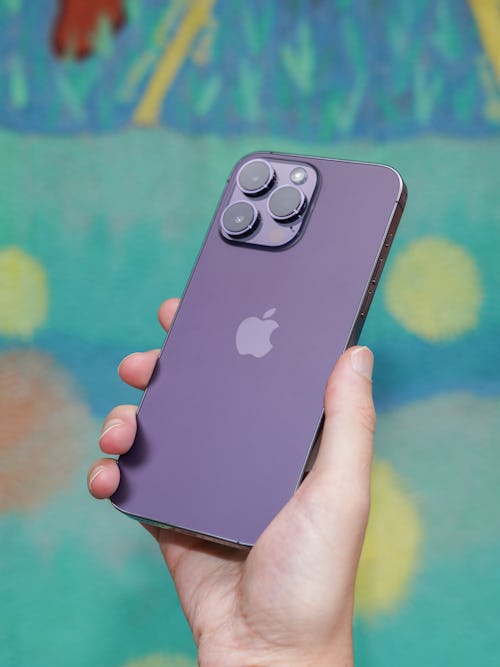
I wrote in my iPhone 13 Pros review: "No Android phone comes close to the iPhone when it comes to sheer performance. iPhone dominates again." Still holds true with the iPhone 14 Pros. Not only do all of the iPhone 14 and 13 models destroy one of this year's best Android phones, the two-year-old iPhone 12s crush the S22 Ultra by a big margin.
All of this power contributes to serious speed in the iPhone 14 Pros. Most people will look at these increases in CPU and GPU performance and wonder why anyone needs it. And to that, I only have this to say: you don't realize how much computing power the simplest of tasks on iPhone require. When iOS 16 just flies, hiccup-free, that is the CPU talking to all of the various components that make up an iPhone at blistering speeds. When more and more graphically intensive 3D games just run smoothly, without any dropped frames, that is the GPU doing the heavy lifting. When things just work, that is the power of Apple’s chipset accomplishing its job in the background and not getting enough credit.
Battery life
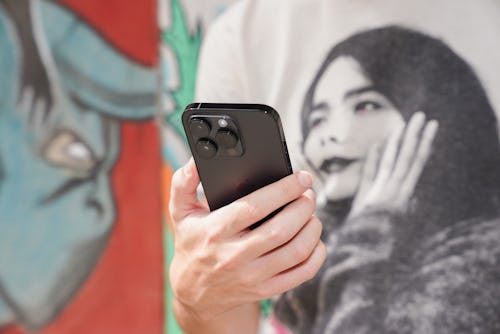
Not much to report here. Compared to the iPhone 13 Pro / 13 Pro Max, the iPhone 14 Pro / 14 Pro Max gets one extra hour of battery life for local video playback. However, if you compare the battery life to the iPhone 12 Pro / 12 Pro Max, you can see there's a major leap. The iPhone 14 Pro / 14 Pro Max are going to last longer for people like me who purchase an iPhone every two years (or more).
iPhone Pro:
- iPhone 12 Pro: 17 hours (video) / 11 hours (video streamed) / 65 hours (audio)
- iPhone 13 Pro: 22 hours (video) / 20 hours (video streamed) / 75 hours (audio)
- iPhone 14 Pro: 23 hours (video) / 20 hours (video streamed) / 75 hours (audio)
iPhone Pro Max:
- iPhone 12 Pro Max: 20 hours (video) / 12 hours (video streamed) / 80 hours (audio)
- iPhone 13 Pro Max: 28 hours (video) / 25 hours (video streamed) / 95 hours (audio)
- iPhone 14 Pro Max: 29 hours (video) / 25 hours (video streamed) / 95 hours (audio)
Since I’m coming from an iPhone 12 Pro to the 14 Pro, I am seeing much longer battery life for mixed usage. This is a combination of two things: 1) the battery health on my iPhone 12 Pro is now at 80 percent after two years of heavy daily use and 2) the iPhone 14 Pro has a larger physical battery.
Despite adding all sorts of features like the Dynamic Island, always-on display, and a larger main camera sensor, the iPhone 14 Pros still get all-day battery life. As with past pro iPhones, the iPhone 14 Pro easily lasts a full day and the 14 Pro Max can make it 1-2 days depending on usage. I've been seeing about 6-7 hours of screen on time with the iPhone 14 Pro whereas I only got around 3-4 hours on my aging iPhone 12 Pro. Older iPhone owners are gonna be blown away by the iPhone 14 Pros' long-lasting battery; iPhone 13 Pro users not so much.
Cameras
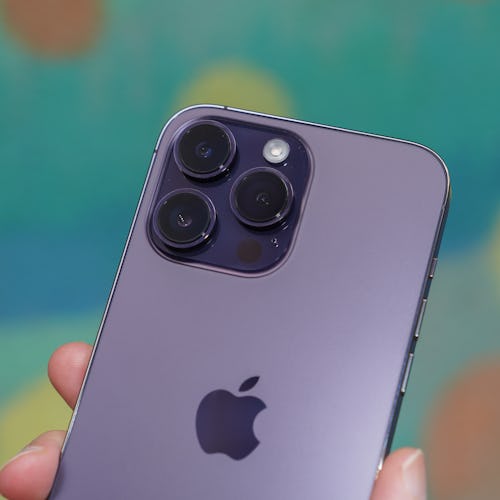
iPhone cameras get more complex every year. There is a lot to digest for the iPhone 14 Pro camera. Maybe too much for the layperson. But you're reading Input, so you like getting nerdy. So let's get really nerdy.
The first thing to know is that the iPhone 14 Pro and 14 Pro Max cameras are identical. They both have a new, larger 48-megapixel main lens sensor. The two other lenses — the ultrawide and telephoto — remain 12 megapixels, but they're improved in various ways. This is the first time that Apple has differentiated the iPhone Pro cameras with a higher resolution main lens. For comparison, the iPhone 14 / 14 Plus stick with 12-megapixel sensors for their dual-lens camera system; these should be comparable to the iPhone 13 cameras.
Here are the cameras the iPhone 14 Pro and 14 Pro Max are working with:
Triple-lens cameras
iPhone 12 Pro / 12 Pro Max:
- Main: 12 megapixels f/1.6
- Ultrawide: 12 megapixels f/2.4
- Telephoto: 12 megapixels f/2.0
iPhone 13 Pro / 13 Pro Max:
- Main: 12 megapixels f/1.5
- Ultrawide: 12 megapixels f/1.8
- Telephoto: 12 megapixels f/2.8
iPhone 14 Pro / 14 Pro Max:
- Main: 48 megapixels f/1.78
- Ultrawide: 12 megapixels f/2.2
- Telephoto: 12 megapixels f/2.8
Immediately, you can see that there's the new 48-megapixel main lens with a smaller f/1.78 aperture. The ultrawide lens aperture is smaller at f/2.2, too. For real DSLR/mirrorless camera lenses, these smaller apertures normally mean worse low-light performance. That's not the case in the iPhone 14 Pros. See, the image sensors for both the 48-megapixel main and ultrawide lenses are actually much larger than the ones in the iPhone 13 Pros: 65 percent larger main lens sensor and "nearly twice the size" for the ultrawide sensor according to Apple. As a result, these larger sensors let in more light, which creates brighter images with greater detail when the lighting is poor. At least that is the claim.
Apple also says it’s improved the iPhone 14 Pros' image pipeline with something called the "Photonic Engine." Per Apple, Deep Fusion (you may know it as "sweater mode"), which takes better images in mid-level luminance to produce sharper images (here's proof it really works), now kicks in earlier when images are processed right after they're clicked. Apple claims the Photonic Engine improves image quality for all three camera lenses. By how much? You’re about to find out in a second.
There is a lot to digest for the iPhone 14 Pro camera.
By default, the iPhone 14 Pros' 48-megapixel sensor takes 12-megapixel photos. If you own an Android phone with a high-megapixel camera, you probably already know how this "pixel binning" process works. But for iPhone users, here's the download: four pixels are combined into a single pixel, which you can think of as like a super pixel. This 48-megapixel sensor, or "quad-pixel sensor" as Apple calls it can do two things: produce a really good 12-megapixel photo (especially for low-light photography) or create an image with more resolution at the full 48-megapixel resolution in ProRAW mode.
This big 48-megapixel sensor also has another trick: it can simulate 2x telephoto images by zooming in on the center of the frame.
Other still photo upgrades in the iPhone 14 Pros' cameras include an "Adaptive True Tone flash" that Apple claims can blast out different amounts of light at different focal lengths and an improved 3x telephoto lens that takes better low-light photos.
Like I said, it is a lot to digest.
Of course, the very first thing I did after setting up the iPhone 14 Pro / 14 Pro Max was turn off the camera's auto macro mode (Settings > Camera > Auto Macro), which I had found extremely disorienting in the iPhone 13 Pros. Next, was start testing the new cameras by hitting New York City's streets.
Main lens
I’ll be honest, my expectations were high for the iPhone 14 Pro’s default 12-megapixel images. The reality is a bit different. Photo details are sharper, with less image noise in almost all kinds of lighting, for sure, but they’re very similar to photos taken with an iPhone 13 Pro. Can you even see any differences in image quality in this outdoor comparison? Unless you zoom in and do a thorough side-by-side comparison, not really.



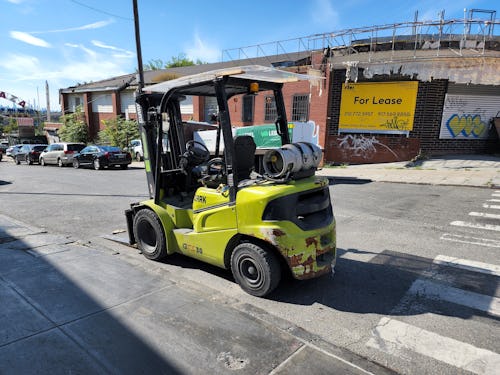
Shot after shot, outdoor photos looked almost identical between the iPhone 14 Pro and 13 Pro. It was really tough to tell one from the other.




The same thing goes for indoor shots. Photos from the iPhone 14 Pro are a tiny bit sharper, but only if you do comparisons.
48-megapixel ProRAW —
The thing you really want to know is whether or not the higher resolution 48-megapixel RAW photos that the iPhone 14 Pro is capable of capturing are legit or not. The simple answer is: yes!
I’ve tested more than my share of Android phones with high-megapixel camera sensors and they’ve always underwhelmed in some way. Apple’s ProRAW DNG was a bit disappointing for the iPhone 13 Pro and 12 Pro; there’s barely more detail to get from a 12-megapixel RAW compared to a 12-megapixel JPEG. Not so with 48-megapixel ProRAW files; these images are massive (often clocking in between 70-80MB) and the amount of detail you can get is borderline nuts for a phone. See for yourself. Below are two images. The left one is a 12-megapixel HEIC image (I had forgotten to turn off HEIC for JPEG, but it doesn’t matter). The image on the right is a 48-megapixel ProRAW image converted to a full-resolution JPEG (because our CMS doesn’t take RAW DNG files).


To give you an idea of the amount of detail a 48-megapixel image has compared to a 12-megapixel one, I share with you the below two images, both opened on my Mac at 100 percent full resolution.

In the 12-megapixel photo, the full-size crop can only zoom so much. But look at the 48-megapixel RAW file below — you can zoom in so much closer. And the detail! It’s really impressive for a smartphone camera. Oftentimes, high-megapixel photos from Android phones means crunchy details. Whatever wizardry Apple is doing with the Photonic Engine is practically magic.

As a smartphone camera junkie and that guy who buys the largest iPhone Pro storage model because he takes way too many photos, there is no going back to 12-megapixel JPEG photos for me. I am gonna be shooting 48-megapixel ProRAW from now on. It’s just too good.
There are caveats to shooting ProRAW. While it works for outdoor photos, it does not work with night mode or flash photography photos; the iPhone 14 Pro camera spits out a 12-megapixel RAW in both cases. It’s a minor letdown since low-light is precisely the kind of photography where RAW can really save an image in post.
Ultrawide lens
Corner to corner, the iPhone 14 Pro’s 12-megapixel ultrawide lens captures less noisy photos. You really have to pixel peep to see the clarity, but it’s there.




Telephoto lens
The iPhone 14 Pro’s faux 2x telephoto really impressed me as well. As I said earlier, the 2x telephoto images are actually zoomed-in 12-megapixel photos taken from the full 48-megapixel sensor. The photos are shockingly solid. They look as good as the photos from the iPhone 12 Pro’s 2x optical telephoto; in low-light, 2x telephoto photos look even better because they get all the benefits of the larger quad-pixel sensor and larger f/1.78 aperture.




Low-light / night
Overall, the iPhone 14 Pro’s low-light photography is improved in my opinion. Not by a huge margin compared to the iPhone 13 Pro, but white balance is more accurate — less yellow. There’s also way less image noise compared to the iPhone 12 Pro and S22 Ultra. The image from the latter camera has such mushy details compared to the iPhone 14 Pro.




For low-light ultrawide photography, the iPhone 14 Pro takes better shots with slightly more definition and less noticeable flaring. It’s miles better than the iPhone 12 Pro and a much better image than the S22 Ultra’s brighter, but blurrier photo.



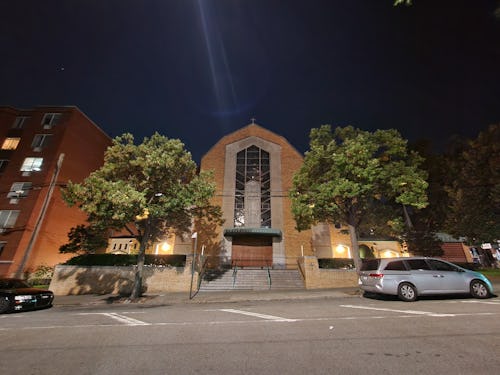
The iPhone 14 Pro is not without some shortcomings for low-light photography. Some of my close-up low-light comparisons had longer lens flares coming off bright objects and colors could come out flatter, with less vibrancy and contrast compared to the same image taken with the iPhone 13 Pro. The iPhone 14 Pro’s main camera can sometimes favor exposing more shadow details at the expense of color vibrance. It’s something that can be fixed with a few edits (easily within the iPhone’s Photos app), but it did give me some pause.
Portrait mode
Portrait mode photos look about the same if you ask me. The iPhone 14 Pro’s machine learning models do a good job blurring out the background with the 2x digital crop-in telephoto portrait mode. It’s very comparable to the iPhone 12 Pro’s optical 2x telephoto portrait.
Same goes for the 3x optical portrait mode comparison between the iPhone 14 Pro and 13 Pro. They look pretty similar in terms of depth of field. The differences are subtle. James’ skin tone in the iPhone 14 Pro portrait is less red than in the 13 Pro shot. You can also see how the bokeh balls are rendered a bit differently in the background. I might actually prefer the iPhone 13 Pro’s bokeh here; you can make out the red and orange of the exit sign lights in the background whereas it’s more red in the iPhone 14 Pro picture.




Selfie camera
It’s hard to believe that the iPhone 14s are the first iPhones with autofocus in the selfie cameras. But here we are. While image quality is more or less the same in good lighting and marginally better in darker scenes, the autofocus does do its job of locking onto your face (or multiple faces). I am not the biggest selfie taker so autofocus for the front camera is less important to me, but if you do shoot a lot of selfies, you’re gonna appreciate it.
- iPhone 12 Pros: 12 megapixels f/2.2
- iPhone 13 Pros: 12 megapixels f/2.2
- iPhone 14 Pros: 12 megapixels f/1.9 with autofocus




Some 100 percent crops of my face for you stans out there who want to see all my pores.

Video upgrades
I'll keep this section short: the iPhone 14 Pros take the best videos in a smartphone. Period. Android phones tout 8K video recording and all kinds of buzzwordy modes for video stabilization, but the iPhone is still the best for video capture.
Cinematic mode —
Apple's upped the resolution for Cinematic mode from 1080p / 30 fps on the iPhone 13 Pros to 4K HDR / 30 fps (or in 24 fps for that real cinema-like look). Nice! But the whole "rack focus" thing can still leave a lot to be desired. If you were turned off by Cinematic mode's limitations, you won't find any big improvements here. The background blur is a smidge cleaner around subject edges, but mostly still rough.
Action mode —
This video stabilization mode should be turned on by default. That's how good it is at capturing smooth video. I get why it's not: it only records at a max 2.8K resolution at up to 60 fps compared to the regular video mode's max 4K / 60 fps. But holy cow, the stabilization is unreal. Here's a comparison video between an iPhone 13 Pro and iPhone 14 Pro with Action mode turned on. Both are recording with the main lens at 30 fps, but because the iPhone 14 Pro tops out at 2.8K resolution, its field of view is cropped in.
I'm calling it now: there's no need for a gimbal with Action mode turned on. It's just that good.
Should you buy the iPhone 14 Pro?
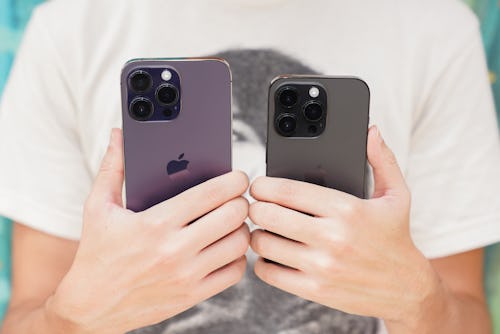
iPhones are like candy — they're addictive as hell. People want the latest iPhone even if they don't need it. You've read my thoughts on the Dynamic Island (awesome), the 48-megapixel camera (fantastic), the A16 Bionic chip (leaves Android in its dust), and the battery life (still terrific). There are two features that I didn’t get to test (crash detection and emergency SOS via satellite); these are features you hope you’ll never need. At Apple Park, I did get a real demo of the emergency SOS feature. It works, but satellite connectivity can be iffy without a direct line of sight.
Long story short: the iPhone 14 Pro and 14 Pro Max are winners. But we're also in (or close to) a recession; everyone should spend their money wisely.
If like me, you've got an iPhone 12 or older — perhaps it's slow or damaged or both — and you're sticking with iPhone, the iPhone 14 Pros are superb. You'll love all of its new features and have zero FOMO because you're getting Apple's best iPhone.
iPhone 13 users — maybe. If you've got a regular iPhone 13 / 13 mini and you're feeling the Dynamic Island, better camera system, and always-on ProMotion display, then yes. Otherwise, you could totally make it another year and wait for the iPhone 15. iPhone 13 Pro users might not see enough to upgrade here. You could probably live without the Dynamic Island; the always-on display is nice, but not a must-have; and unless you plan to take 48-megapixel photos all the time or shoot a ton of video with Action Mode on, the iPhone 13 Pro camera is still right up there.
The iPhone 14 Pro and 14 Pro Max are winners.
If you've got an iPhone with a Touch ID home button, maybe it's time to move on and get with the times. Otherwise, your only option is to get an iPhone SE (third-gen). Hey, do what you want. It supports iOS 16 so you'll at least get the new customizable lock screen.
Android users — yes, no, maybe. Yes, if you want a phone that has one of the best camera systems available and will be supported with software updates for many years to come. No, if you're a diehard Android fan who refuses to submit to Apple's less flexible platform; perhaps you're already sold on foldables like Galaxy Z Fold 4 or Z Flip 4; or just need a camera zoom that goes beyond 3x optical like what you get on the Galaxy S22s. And maybe? I dunno — you could be two-phone guy, in which case buy or don't buy, you probably already have some idea.







